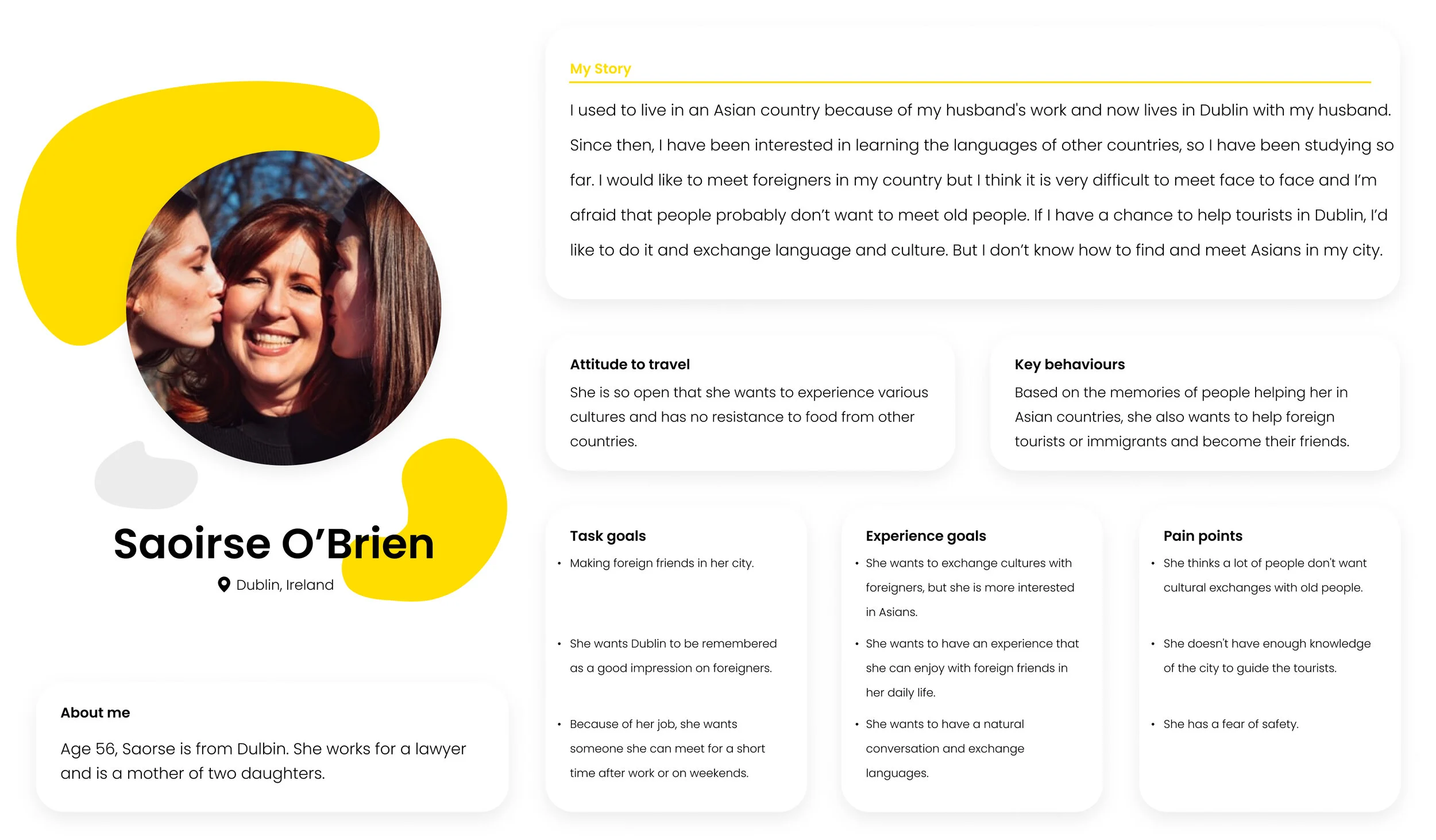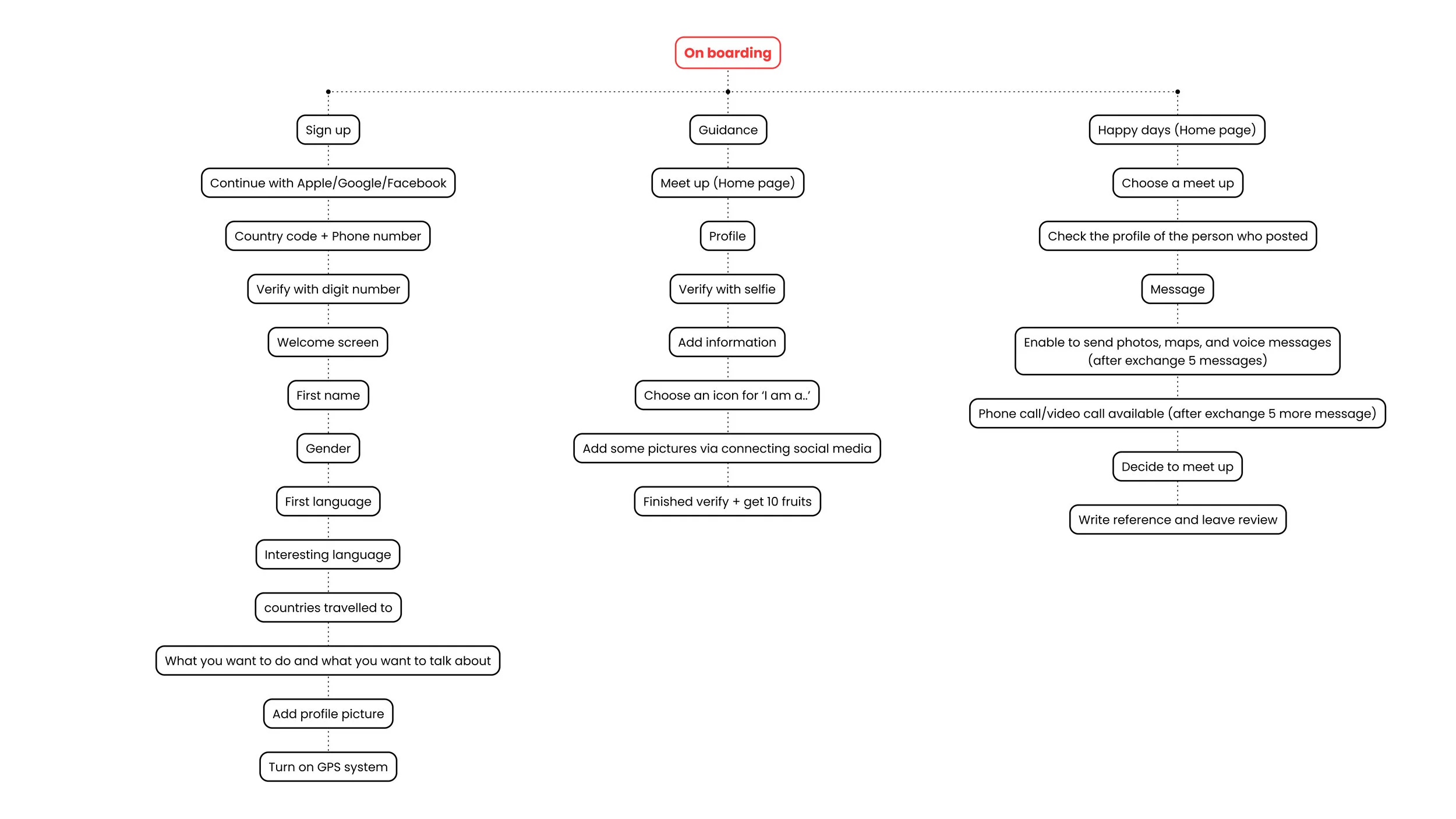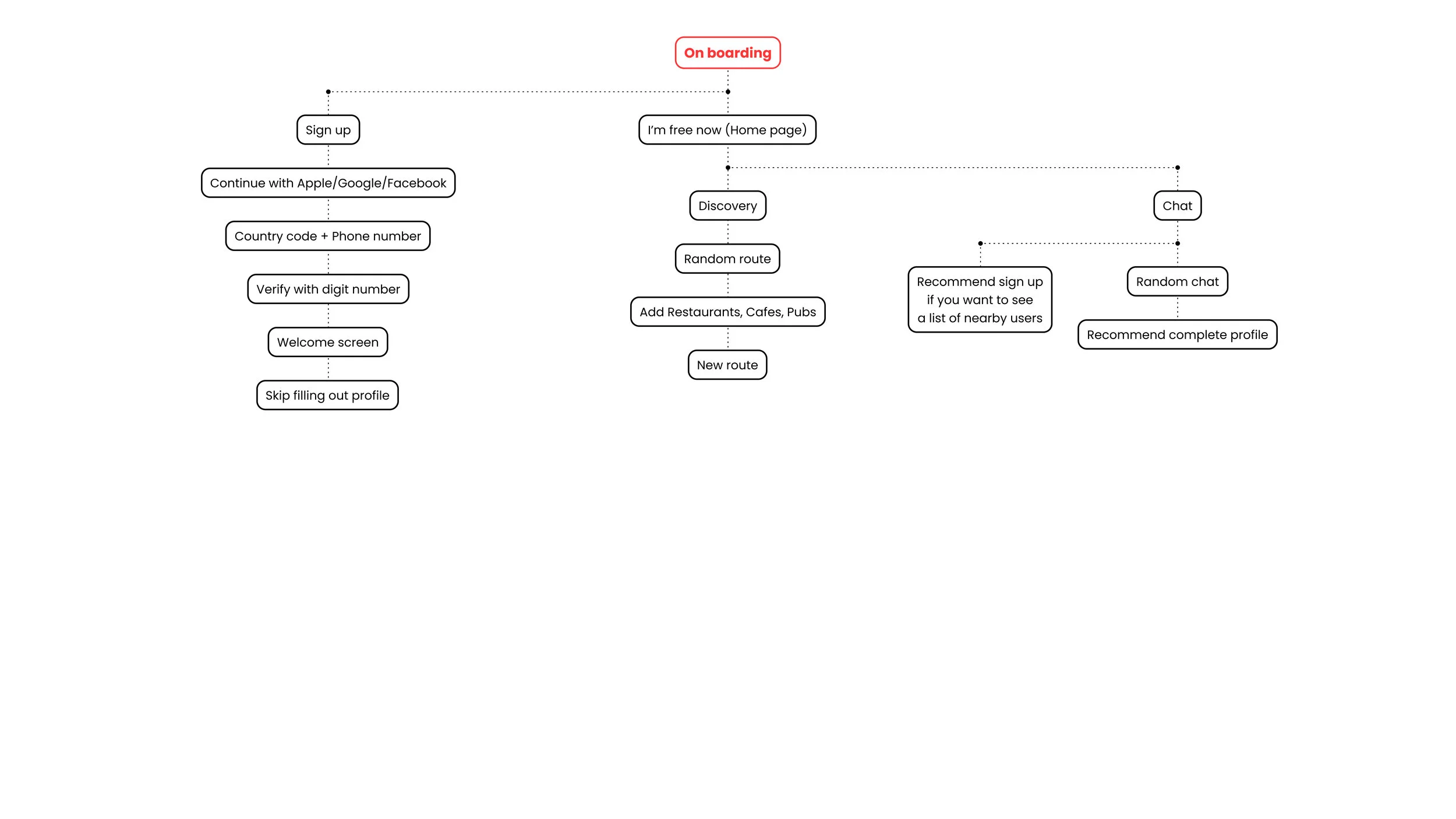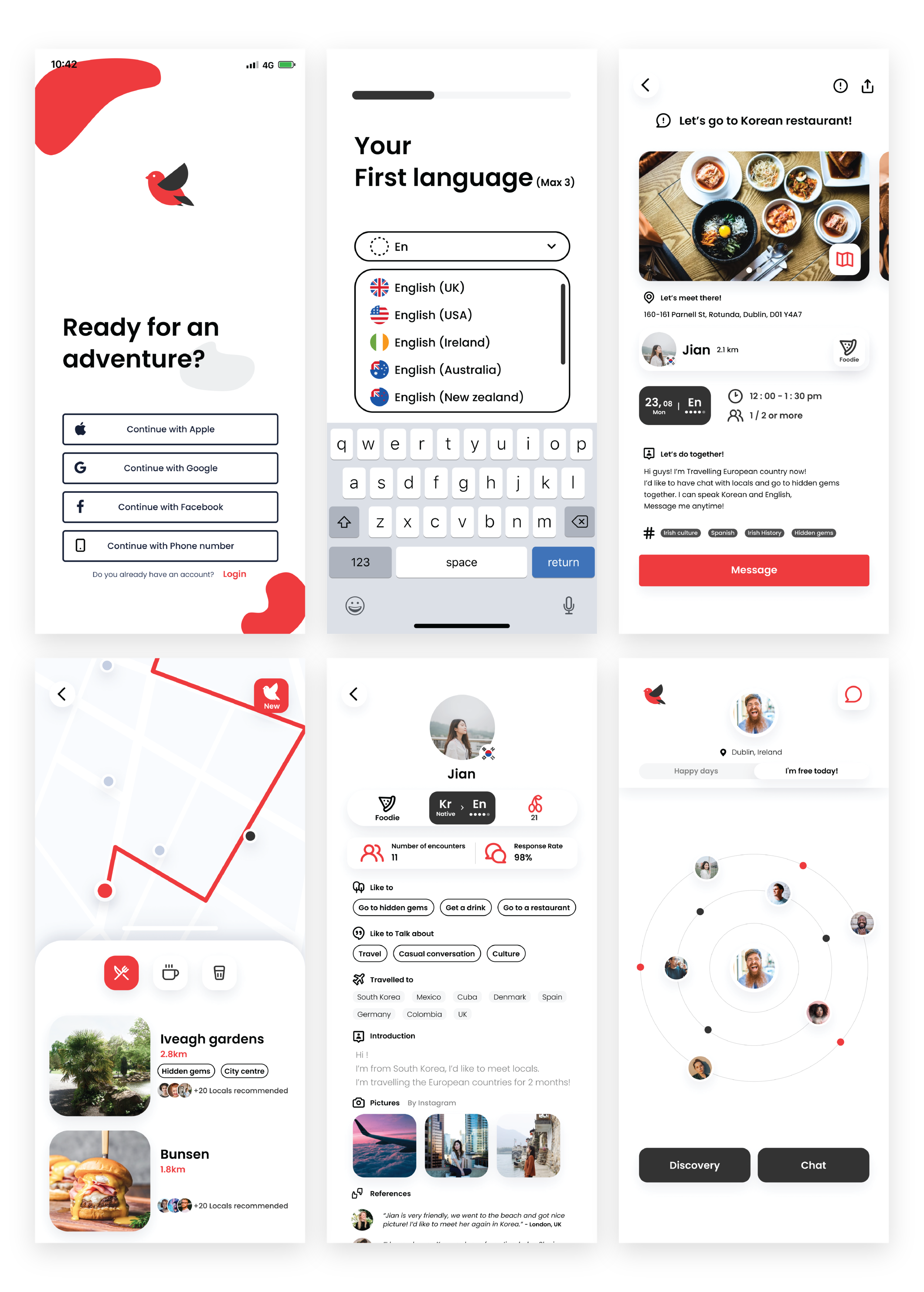
Bird
A geosocial networking service for connecting locals who want to exchange languages in their own country with tourists who want to exchange culture through communication with locals.
Logo and Style guide
Time length
10 weeks sprint
Project type
Individual
Year
2021
Context
This project was for the major project. This project is a platform to connect tourists who want to have real cultural experiences while travelling abroad with locals who want to exchange languages face to face in their cities.
Starting point
Covid-19 has prevented people from travelling around the world. People are generally moving a lot less than before because of remote work and local travel restrictions. We are now at a crucial juncture in the pandemic and if restrictions ease, people may have a renewed motivation to achieve their personal goals that they have had to long postpone or perhaps they will even have thought of new goals during lockdown. People continue to crave travel, and they live recalling good memories of the past.
Primary research
Stakeholder mapping
Interviews with tourism industry experts
“Locals don’t want to pay for learning history on domestic travel, Finding ways to en- courage local people to travel domestically is our next challenge.”
- Pádraig Ó Lideadha
“In general, tourists want to experience the local people’s daily lives and enjoy themselves.”
- JongMyeong Park
“Anyone can be a guide without expertise, If you are interested in travelling.”
- Chen Ho Syuan
Survey
Participation of foreigners and locals who will be the main users of this project in the Survey
4 Irish men in their 20s & 18 foreigners of various nationalities
Affinity map
Result of the survey
Key insights - Primary research
-
Some locals assume they already know a lot about the history of their surroundings, so they don’t want domestic travel as much as over- seas travel.
-
Many tourists want to meet locals and experience the real cultural experiences locals enjoy. Some locals want to meet foreigners in their own countries and exchange cultures.
-
People want to meet and socialise with new people while they are travelling, but they are concerned about safety.
-
People feel bored with tourist attractions that they are not interested in while on a walking tour, but they cannot end the tour at will, and guides also have to try to maintain their interest.
-
Tourists want to explore the city freely and know the authentic history of the locals, but they don’t want to pay much for the guide.
Co-creation
Findings
Locals usually want to relax when they walk around and be free from too many distractions.
Tourists usually want to do many things in a short period of time and connect with locals, but they have worries regarding language and safety.
Both want to find hidden places rather than going to crowded and famous places.
If they have an opportunity to communicate they would like to meet each other and engage in a social activity.
Ideation
01. Location-based social network service
I thought the two (locals and tourists) needed a space that would create mutually beneficial communication. Many people around the world are using social media to get travel-related help, and I also have that experience, focusing simply on location-based social networks that help them communicate and are easy to share and find information.
02. Change of routine
The service freshens up a monotonous routine, as it provides a degree of novelty in the life of both tourists and locals. This provided inspiration for further developing the concept of the application from the perspective of local people. Having interviewed local people, several of them commented that when they meet tourists they feel as if they are almost travelling themselves. It could also freshen their mindset in relation to their habitual surroundings. So I considered building a service such as an online random chat to facilitate this.
03. Meet people who share common interests
Finally, having taken into consideration the viewpoints of potential users I decided to develop a service that helps people with the same interests meet. You can think of it as a dating app, but it is aimed at helping you make friends, not find a partner. And the focus was on establishing a service that would allow tourists staying in a city for a short period of time to meet locals.
Experience journey map
Storyboard
Using existing apps
To shape the way the main user interacts with the application, I found and used existing apps similar to the direction of the project. I identified possible deficiencies and benefits of these apps. This helped me to create a project by identifying how it was designed to meet the expectations of users, what methods and design elements were needed to solve the problem, what was necessary and what was unnecessary.
Findings
Used a phone call to check if the person is real before the meeting.
Asked to meet during the day and at a public place.
Talking about where we travelled was the most interesting and easy to find common ground.
After getting to know each other, I naturally wanted to take her to places I knew and show her.
Even if it’s not for language exchange purposes, some locals want to meet foreigners (especially a group) to break their daily routine if they find it repetitive.
Key insights
Some users want to know more about the culture of a particular country they are interested in, or if they can speak a language, they want to communicate with people from that country.
Even if I continue the conversation online, I am concerned about scams and nervous about the idea of meeting face-to-face.
Difficult to continue the conversation if our interests are very different.
Some users just looking for someone to hang out with for the day.
Key Findings
For people who feel anxious about meeting strangers, some verification is required when signing up and while using the app.
The biggest shared interest between locals and foreign tourists is language exchange, which allows users of different nationalities to match based on their language of interest.
It is possible to increase safety by linking users’ profiles with other social media to view more photos and information, rather than profiles that can only be found within an app.
Matching systems using photos are unnecessary as the app is not for dating purposes.
User flow

Prototyping
Low-fi prototype
The user chooses one language, their native language, and the country they travelled to. The reason for choosing a first language was that if other users were interested in my first language and if I was interested in the other user’s mother tongue, they would be able to see each other when opening a meet-up. I think it is most common to ask about each other’s country and start talking about the countries we travelled to or talk about the countries we want to travel to with strangers or foreigners, based on my personal experience.
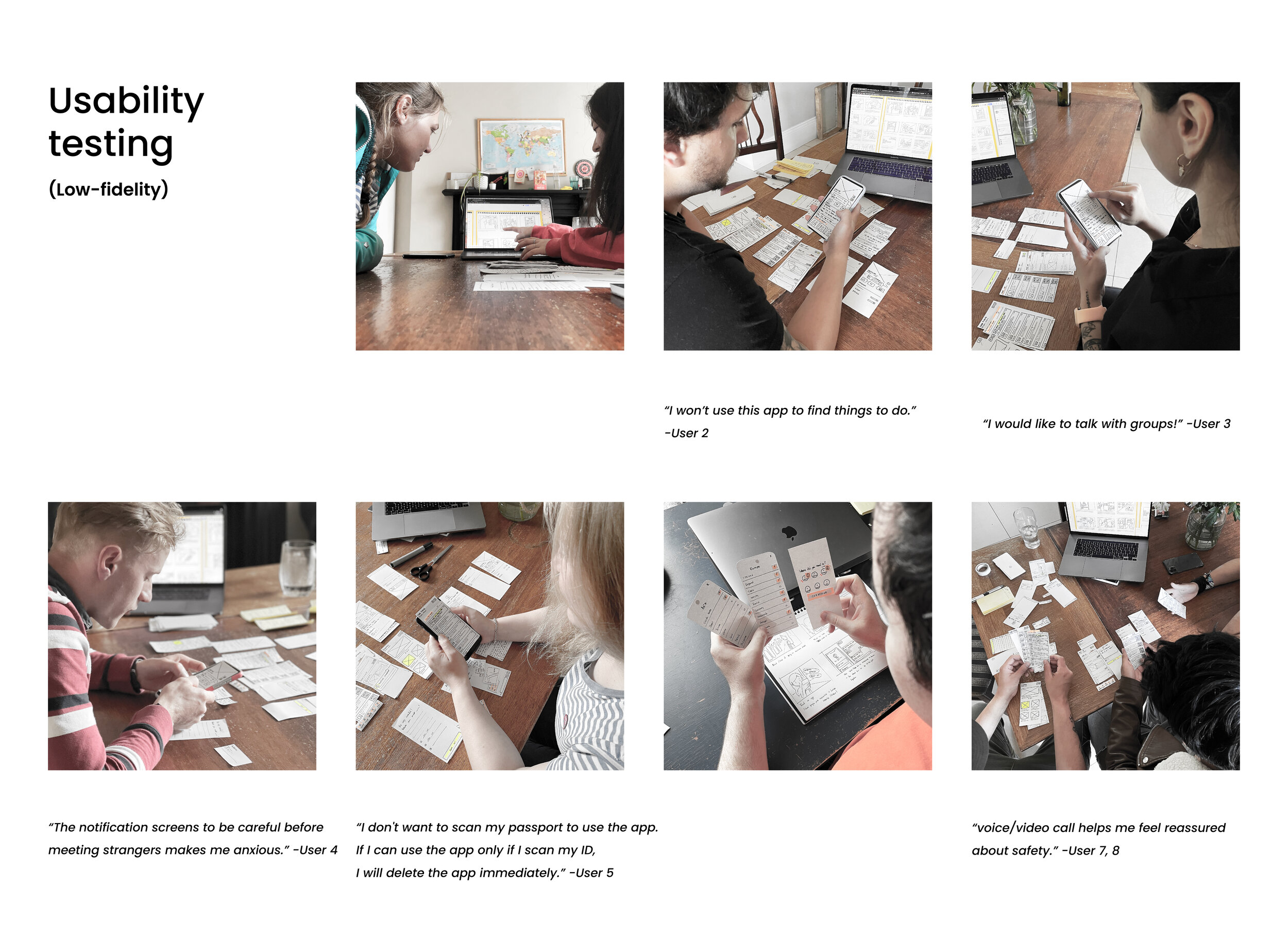

Mid-fi prototype
The biggest change was the removal of the navigation bar previously shown in the prototype, and the focus was on a core feature. As a result, I defined the meet-up page as a necessary thing for locals and tourists to meet. I was focusing on creating a profile that can introduce users, chats where I can see chat rooms in which I communicated with others, and finally a meeting page which is a home screen where the users can join and subscribe to information about the meeting.


High-fi prototype
The biggest change was that instead of dividing the page on the home screen by the dates, I changed it to 2 pages for people who wanted to communicate with someone immediately or want to explore the city alone and want to find and join a meetup event.
I removed the Join button from Meetup posts and left only the message button so that users can get to know each other through conversation, before deciding to meet. And if they want to delete the post, they can only delete it when the meeting is confirmed between the two users.
If you look at the profile, you can see the fruit icon, which I used as a reference to the user’s previous meet-up reviews and also as a safety factor. However, by providing each of the 10 fruits to users who have completed verification in other ways, the review of the user was set up to be based on whether the fruit decreased or increased. The bad reviews were originally set up not to be seen, so the emphasis is on checking the number of berries and ensuring that all users are aware of the safety of other users or their reviews.





















